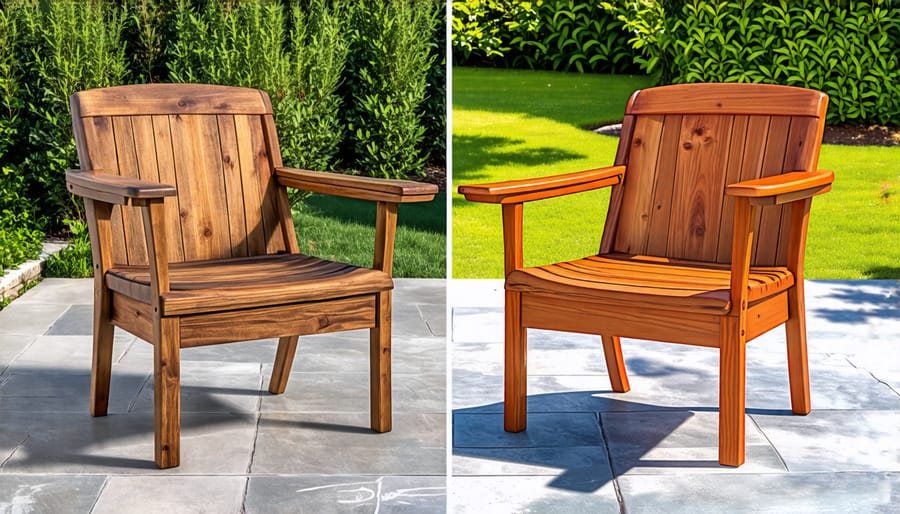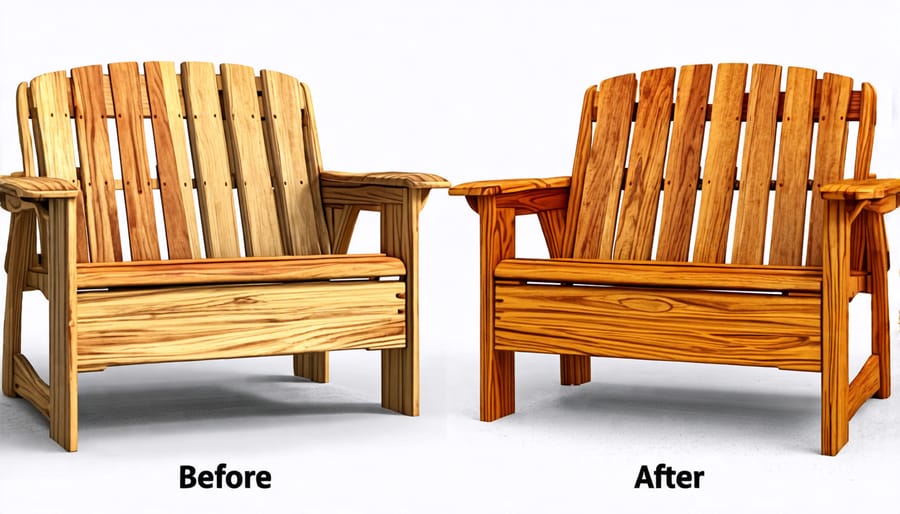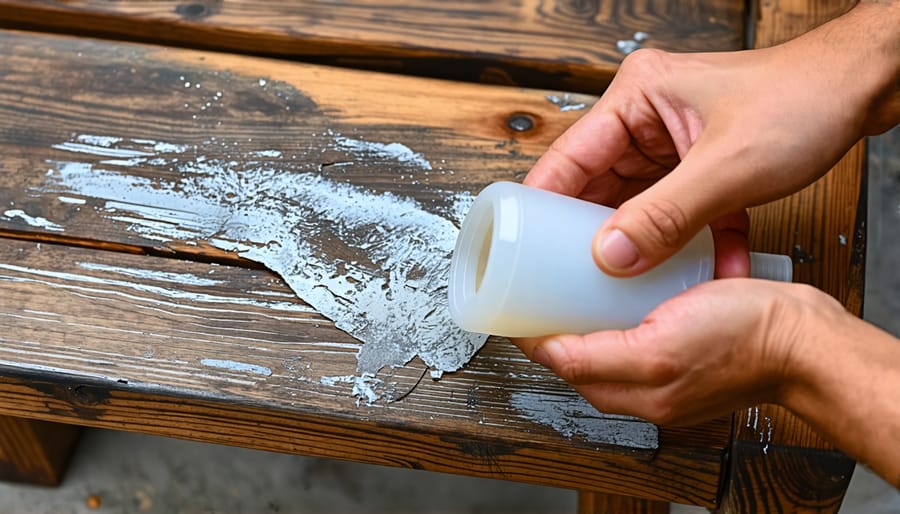
Revive Your Faded Polywood Furniture in 5 Simple Steps
Sand the faded polywood surface with fine-grit sandpaper to remove the top layer of discoloration and expose fresh material underneath. Apply a high-quality polywood restorer using a soft cloth, working it into the surface in a circular motion to deeply penetrate and revitalize the color. For extra protection and shine, finish with a coat of UV-resistant polywood sealant, which will help prevent future fading and keep your restoring faded polywood furniture looking vibrant for years to come.

Step 1: Clean the Furniture
Supplies Needed
To restore faded polywood furniture, you’ll need a few key supplies: a soft-bristle brush, cleaning cloths, mild dish soap, warm water, and a polywood-safe restoration product. Optional items include a pressure washer for deep cleaning and a UV-resistant sealant to protect against future fading. Gather your supplies in a well-ventilated work area before starting the restoration process.
Cleaning Process
To clean your faded polywood furniture, start by removing any loose dirt or debris with a soft-bristled brush. Next, mix a mild detergent with warm water in a bucket, and using a non-abrasive sponge, gently scrub the surface in a circular motion. Be sure to clean all sides and crevices of the furniture. For stubborn stains, you can use a soft-bristled brush and a mixture of baking soda and water to gently scrub the affected areas. Once you’ve finished cleaning, rinse the furniture thoroughly with a garden hose or a clean, damp cloth to remove any remaining soap residue. Allow the furniture to air dry completely before moving on to the next step in the restoration process. It’s important to avoid using harsh chemicals or abrasive materials that could damage the surface of the polywood. With proper cleaning, your furniture will be prepped and ready for the next phase of restoration.
Step 2: Sand and Smooth
Once the furniture is clean, it’s time to sand. Sanding helps remove any remaining dirt, grime, or rough patches, creating a smooth surface for optimal staining and restoration. Start with a medium-grit sandpaper, around 120-grit, and work your way to a finer 220-grit for a polished finish.
For best results, sand in the direction of the wood grain using long, even strokes. This technique minimizes visible scratches and ensures a uniform appearance. Pay extra attention to corners, edges, and heavily weathered areas, as these may require more sanding to achieve a smooth surface.
If you encounter stubborn stains or deep scratches, you may need to use a power sander or start with a coarser sandpaper, like 80-grit, before progressing to finer grits. Just be careful not to sand too aggressively, as this can damage the polywood material.
After sanding, wipe down the furniture with a clean, damp cloth to remove any dust particles. Allow the piece to dry completely before moving on to the next step. Proper sanding sets the stage for a successful restoration, ensuring the stain absorbs evenly and adheres well to the polywood surface.
Step 3: Apply Restoration Solution
Choosing the Right Product
When choosing a product to restore your faded polywood furniture, consider the furniture’s condition and original color. For lightly faded pieces, a gentle cleaner and color restorer may suffice. More heavily weathered furniture may require a deeper cleaning and more intensive color restoration product. Look for solutions specifically designed for polywood that penetrate the material to revive the color without damaging the surface. Compare the product color to your furniture’s original hue to ensure a good match. With the right product selected, you’ll be well on your way to bringing your faded polywood back to life.

Application Methods
To apply the restoration solution, start by cleaning the polywood surface thoroughly with a soft brush or cloth to remove any dirt or debris. Shake the solution well and pour a small amount onto a clean, lint-free cloth. Working in small sections, gently rub the solution into the polywood using circular motions, ensuring even coverage. Allow the solution to penetrate the material for 5-10 minutes before wiping away any excess with a clean, damp cloth.
For best results, apply the solution in thin, even coats, building up the color gradually. Avoid oversaturating the surface, as this can lead to streaking or unevenness. If you notice any drips or runs, wipe them away immediately with a clean cloth. Once you’ve achieved the desired color, allow the polywood to dry completely for at least 24 hours before using or exposing it to moisture. With proper application and maintenance, your restored polywood furniture will look vibrant and beautiful for years to come.
Step 4: Wipe Off Excess Solution
Once you’ve allowed the restoration solution to penetrate the faded polywood surface for the recommended time, use a clean, lint-free cloth to gently wipe away any excess product. Work in the direction of the wood grain to ensure an even finish and avoid streaks or unevenness. Be thorough in removing all excess solution, as leaving any residue behind can lead to a sticky or tacky surface once dry. If needed, you can lightly dampen the cloth with water to help remove any stubborn spots. After wiping, allow the furniture to air dry completely before moving on to the final steps.
Step 5: Let It Dry
Once you’ve applied the color restorer, allow the polywood furniture to dry completely before using or applying any additional coatings. Drying times can vary depending on temperature and humidity, but generally, wait at least 24 hours to ensure the product has fully penetrated and dried. Avoid placing the furniture in direct sunlight or near heat sources during this time, as it may cause uneven drying or affect the restoration results. After drying, your polywood furniture should look refreshed and vibrant, ready to provide years of enjoyment in your outdoor space. For long-lasting results, consider applying a UV-resistant clear coat to protect against future fading.
Conclusion
Restoring faded polywood furniture is a rewarding DIY project that can breathe new life into your outdoor living space. By following the simple steps outlined in this guide, you can transform your dull, weathered furniture into vibrant, eye-catching pieces that look like new. The key to success is thorough cleaning, sanding, and applying a high-quality paint or stain specifically designed for polywood. With the right tools and a little elbow grease, you can achieve professional-looking results that will last for years. Don’t let faded furniture detract from the beauty of your outdoor oasis – take on this project and enjoy the satisfaction of a job well done.
